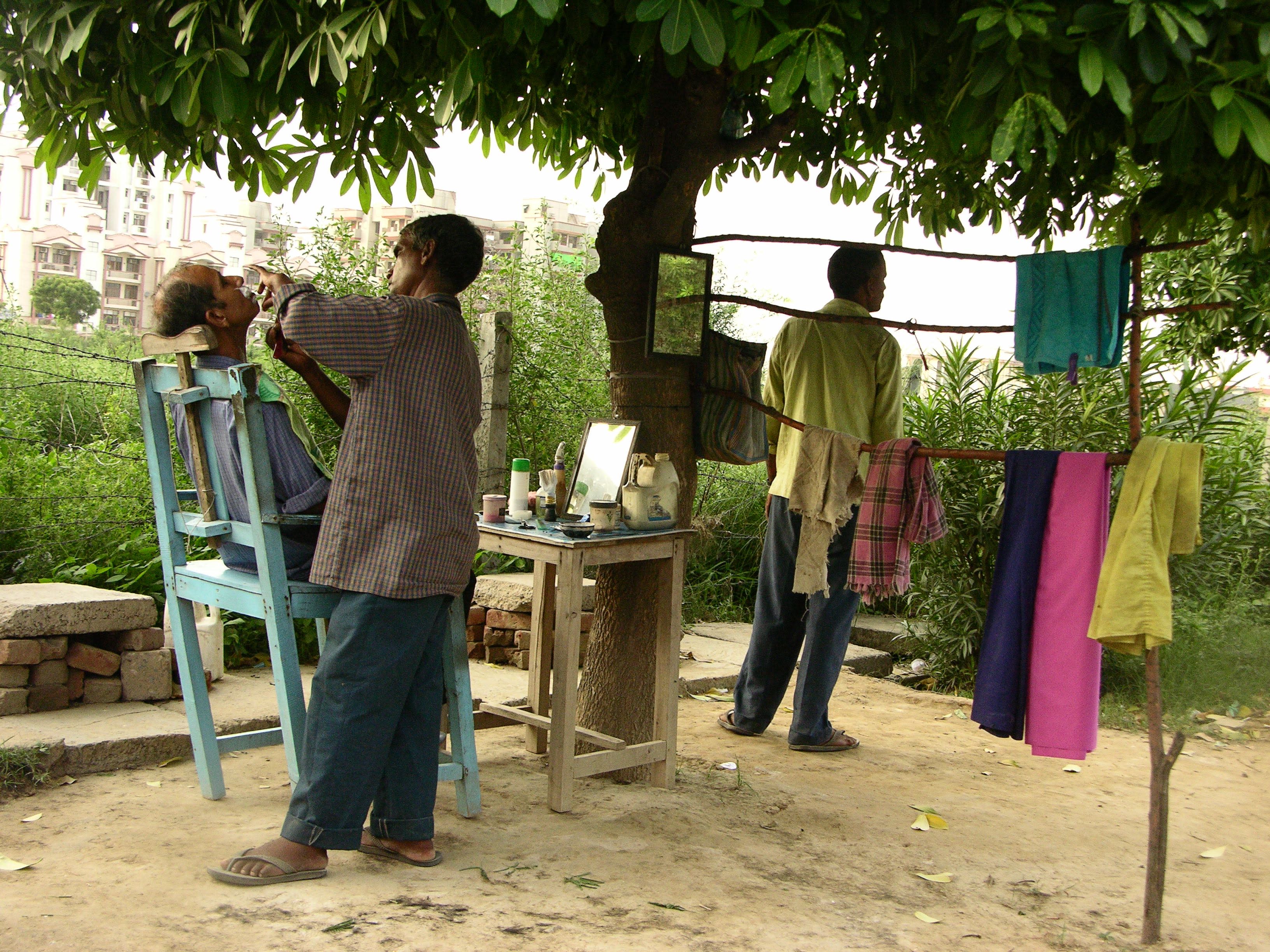 Listen to this article
•
15:34 min
Listen to this article
•
15:34 min
I will never forget the sight of early morning smoke rising from the dense base of a tree in Delhi. It was a large avenue tree in Dwarka, a kind of a ficus on one of the main arterial roads, a stone’s throw from a traffic light. It was peak summer and I was visiting my parents on a weekend. My first reaction was that it was so hot that the tree was spontaneously combusting. I parked my car to take a closer look and was bowled over to find a woman and two children — a boy and a girl — sitting within its large circumference. It seemed to hold that household within its arms. The woman had a pot on a stove and the thick coppiced foliage contained their belongings: a few utensils, a schoolbag, a string that had some clothes hanging, a tattered mosquito nest, a charpoy, and a basic wood stove. I stood and stared. The woman looked at me, her eyes smarting from the smoke. I felt I was intruding, even though this domestic spectacle was being played out just metres away from a busy intersection. I drove off, marveling at the life of this family so closely entwined with the tree. Not everyone who spends long hours under a tree receives enlightenment, I thought. Some barely manage to keep body and spirit together.
In 2013, Sheila Dikshit, the then chief minister of Delhi, announced that Delhi was the greenest capital in the world and exhorted students and citizens to plant more trees, and to care for them. More trees meant more birds, cleaner air, lower temperatures and an improved aesthetic experience of the city; in short, a better quality of life. The poor and homeless were, of course, left out of the urban tree discourse. They didn’t own anything in the city. They were, at best, encroachers. Fortunately, trees are a lot more generous than the government. They are a lifeline to a large section of the city’s marginal population that leans on them, setting up a chai shop, a paan stall, a dhaba, a chaat stall, a barber shop, a flower shop, sometimes even a crèche around construction sites. It’s a ‘treeconomy’ where the urban tree plays a central role, providing nourishment, even though minimal, to thousands of migrants who flock to the city in the hope of bettering lives. Their first stop often is an unclaimed tree. It is they who share their jug of water with the tree. It is they who light a small diya on festivals under ‘their’ tree.
While photographing these ‘working trees’ in the National Capital Region I often wondered whom the tree belonged to? To the government, the citizen, or to the tinker or tailor who sets up shop under it? When I put the question to Shakeel, a key-maker who spends his entire day under a Neem tree in Friend’s Colony, he points to the protection he has cobbled together around the tree and says —‘ped to sarkari hai, par isse paala humne hai’ [The tree is the government’s but I have brought it up].










